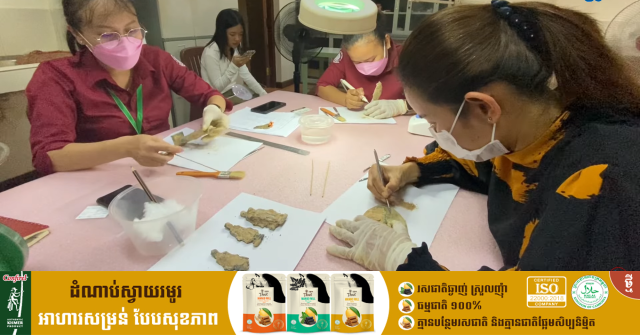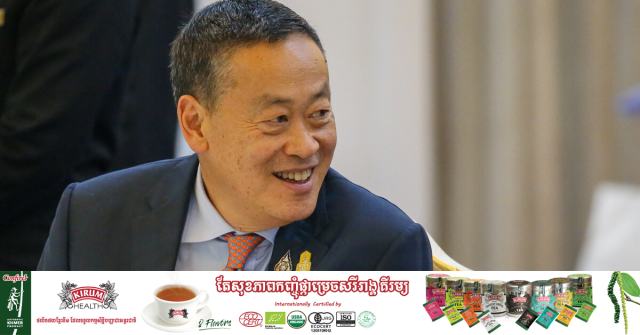Weeks of Scientifically Cleaning Artifacts Bring Back their Beauty

- By Zul Rorvy
- October 1, 2023 12:00 PM
SIEM REAP – In the quiet setting of their laboratory, three women are focused on the artifacts they are cleaning, a series of specialized tools close at hand.
These objects have recently been unearthed at archaeological sites in Siem Reap province. Covered with thick layers of dirt for possibly hundreds of years, the objects demand technical cleaning and patience before they can be put on display in museums.
Located in the Preah Norodom Sihanouk-Angkor Museum in Siem Reap city, the laboratory where a number of artifacts are kept and maintained is in an area of the museum that is not accessible to the public.
“People often wonder why we don’t we just soak the artifacts in water and let the dirt dissolve by itself,” said Be Sinuon, a restoration staff member in the Department of Conservation of Monuments and Preventive Archaeology at APSARA National Authority, which manages the Angkor Archeological Park in Siem Reap Province.
_1696128161.png)
Sinuon, who has been working in this field for more than a decade, is currently working with her team on artifacts excavated at the vast man-made water reservoir of Sra Srang at Angkor. “Well, it is not as easy as it seems,” she explained. “These objects demand delicate handling for their inner sections not to be damaged.”
Before the cleaning process can begin, the restoration people must follow a number of procedures to make sure that the artifacts are as well documented as possible.
_1696128218.png)
“At first, we have to research the object’s history, its style in relation to the periods,” Sinuon said. “Then, we have to take photographs of the object from multiple angles and to highlight where the damages are, and then enter the data into our computer system.”
Every object has its own time requirements. In some instances, smaller objects can be more time consuming than larger ones, Sinuon said.
Brushes, magnification equipment, scalpels, ultrasonic cleaning devices, distilled water and specialized chemicals are some of the tools used at the lab.
_1696128284.png)
“There are two types of cleaning,” Sinuon said. “Dry cleaning involves the use of brushes and scalpels. Wet cleaning involves the use of distilled water.”
If manual tools cannot penetrate the deep cavities of an object or the thickened dirt is too hard to break down, specialists may use ultrasonic machines to do the job, she said. Also, different levels of deterioration may require different products to be used.
_1696128306.png)
Small objects, if broken apart, can be reattached by using glue. For bigger objects that are heavy, techniques involving drilling and adding supporting structures may be used, Sinuon said. Procedures may require layers of wax to be applied on the objects.
_1696128335.png)
A controlled environment with specifically monitored humidity and temperature helps assure the artifacts longevity, Sinuon said. If the conditions are not right and the objects develop unexpected deterioration, specialists may have to proceed with the cleaning processes once again, she said.
_1696128371.png)
Conducted in Khmer for ThmeyThmey News, the interview was translated by Luy Sirey Reaksa for Cambodianess.
To watch the Khmer version, click here.















